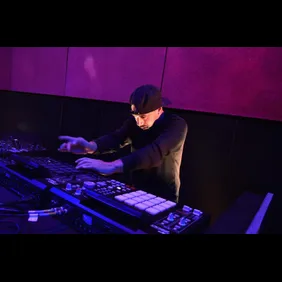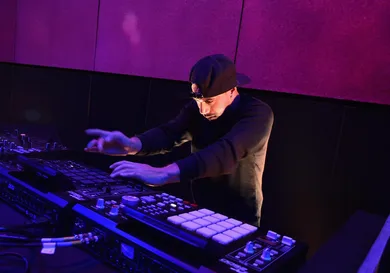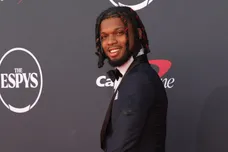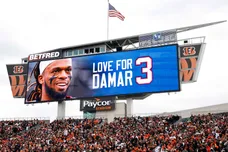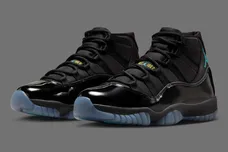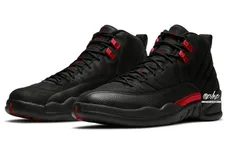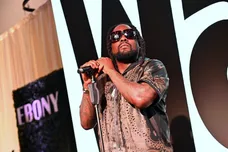2016 marks the 10 year anniversary of AraabMuzik’s first production credit. We chopped it up with the Man With The Fastest Hands about his production style and why he’s “basically the Michael Jordan of what I do.”
...
At a glance, what AraabMuzik does seems simple. 16 buttons to construct a beat is only a hop, skip and a jump from banging out beats with your bare hands on a table, right? Everyone’s done some form of that. But once you see AraabMuzik in action, the words “simple” evaporate from your vocabulary. He’s used his MPC to create everything from classic Dipset beats to massive EDM house bangers. The machine isn’t everything though; AraabMuzik holds originality, versatility and innovation as his core musical principles, driving his sound through many iterations.
16 beatpads is more than enough to make sonic masterworks for the self-proclaimed “MVP of the MPC.” He’s ridden his MPC from his parent’s bedroom in Providence, Rhode Island to performances at the world’s biggest festivals and The Late Show with David Letterman alongside A$AP Rocky, A-Trak and DJ Clark Kent. That machine is his livelihood, his artistic inspiration, his right hand. He even takes the damn thing to business meetings.
Before we dive into how AraabMuzik does his thing, we’ll take a cue from the man himself, and let his hands do the talking:
Musical Beginnings
Abraham Orellana was born on Tupac’s birthday, June 16, to Dominican and Guatemalan parents. He’s one of three children. From an early age, he was surrounded by music. His dad played the guitar and drums, but his mother was the true musical star – she released two gospel albums during his childhood. He quickly learned to play a number of instruments. Naturally the drums were his first love, creating a racket at the tender age of three or four. The keys came next. However, AraabMuzik doesn’t solely credit his skills to extensive musical exposure or dedicated training in his nascent years. “I was just born with it… I picked it up at a young age. It was just really something I was doing off the rip.”
Rapping and singing were never in the cards for young Abraham. Early on, he gravitated towards producers and instrumental makers; Pete Rock, Swizz Beatz, DJ Premier and J Dilla are just a few of the beatmakers he idolized and modeled himself after. He established his name years before he touched his first MPC. “I couldn’t think of anything, and then one day, my man called me ‘Young Arab’ and I just ran with it,” AraabMuzik reminisces, “I just stuck with it and from there I added ‘musik.’” He later would add an additional ‘a’ to ‘Arab’ because he isn’t Middle Eastern and didn’t want to give the wrong impression.
While he had some early production under his belt using a midi keyboard and the computer program Drum Station, it wasn’t until he was 15 and received his first MPC – the MPC 1000 – that he found his sound. “Started banging on those pads and I’ve been doing it ever since,” he explained in a 2011 interview.
The story of how the producer got his drop (“You are now listening to AraabMuzik”) is a microcosm of how he makes his music, even if it happened by accident. In a move that was likely a subtle flex, the person who recorded the drop was “a high school crush,” by his own admission. He had her on speakerphone, and recorded her saying the drop using a video camera his family owned. The resulting tinny breathlessness is a result of the haphazard recording process, he says. Just like recording drums live, the drop was recorded in one take. In all things, AraabMuzik prefers potentially imperfect originality to manicured perfection.
Rhode Island is not a large place, nor is it a destination for musical talent. As a result, AraabMuzik spent much of his early years making music by himself or with a very small circle of friends “There really wasn’t no scene when I was coming up. It was just something I was doing on my own time,” he recalls. There weren’t any local heads who could put him on or boost him up either, so he proved himself at local beat battles and talent shows. For someone who got his first production credit at 16 while he was still in high school, these shows were mostly child’s play. Asked if there was ever anyone who gave him a run for his money at those early shows, AraabMuzik replies simply, “nah, man. I would poop them out.”
Luckily, there was an online video platform called YouTube that became quite popular as he progressed through high school. He began uploading his footage of him making music on his MPC and soon enough someone came calling. That person was DukeDaGod, Dipset A&R and exactly the connected person AraabMuzik lacked in Rhode Island. He got his first production credit on the intro track to More Than Music 2.
Soon enough, he was producing a few records for Hell Rell while still in high school, but after he graduated his workload turned up to match his newfound free time. That work ethic didn’t come easily, as is often true for recent high school graduates. At one point Cam’ron had to sit young AraabMuzik down and tell him: you gotta get the work done, then you can chill. And AraabMuzik did exactly that, cranking out nine beats in a single afternoon. The hard work paid off – his first (relatively) big hit came in 2009 on Cam’ron’s street classic Crime Pays: “Get It In Ohio.” Things only got better after that.
You Are Now Listening to AraabMusik
AraabMuzik’s MPC of choice has been the Akai 2500 for some time now (he’s sponsored by Akai). Aside from the central MPC, he uses “a laptop with a midi keyboard and a couple programming softwares, VSTs for additional sounds, melodies and stuff like that.” He programs everything himself, only using the software to collect sounds for use in his MPC. When asked which software he favors for those sounds, he's agnostic, not preferring one over another. A musical collector, he's amassed an impressive array of samples, live instrumentation, and pre-packaged kits throughout his 10-year career. His advice to aspiring producers? “You gotta just sit there and browse through a lot of sounds."
The live drumming is what gave AraabMuzik his popularity and makes him such a pleasure to watch perform, but as a result his back-end preparation work often gets buried. “It’s very time-consuming,” he says, something that’s at odds with the almost magical alacrity he can create a mind-blowing beat.
While AraabMuzik has claimed he can produce “anywhere” as long as he has his equipment, he still has his preferences. For one, he likes to produce in with dim lights, “cool-like.” He also produces completely sober, unlike the vast majority of hip hop producers today. That may be a facet of his particular style; recording live – especially at AraabMuzik’s speed – requires significantly more hand-eye coordination than arranging and tracking a beat at one’s leisure in FL Studio or Ableton. That’s not to say he’s straight edge; he simply prefers to smoke and drink when he’s not working. His preferred production environment seems suited to the dreamy, electronic style that popularized AraabMuzik as a stand-alone performer (along with his live show) and gained him the cross-over appeal to perform at colleges and festivals around the nation.
Originality often falls by the wayside in production when everyone is chasing the popular sound of the moment, whether it’s DJ Mustard’s funky bass hits, 808 Mafia’s huge drums, or Sonny Digital’s snapping snares. AraabMuzik takes an alternative approach, shunning the popular sounds on the radio (he once said of the radio: “Everything sounds the same”) and going out of his way to alter any stock sounds he uses. “I don’t like using a sound how it is, because people can so easily be like, ‘oh, he got that from that [VST],” AraabMuzik states. “I always like to make things unique and my own.” Remember how he recorded his drop? Take that approach and apply it to every sound he puts into his MPC, whether he’s distorting the original digitally or re-creating it himself.
A Performer Like No Other
We’d be remiss to discuss AraabMuzik without touching on his live performances. Much like a traditional DJ, he takes his tracks and re-creates them live, adding flourishes and increasing the BPMs on his songs to the point of unrecognizability. He sees himself as a drummer, the first instrument he picked up, and imports the improvisation so central to drumming. He credits the appeal of his music and his live performances to this improvisational approach, saying, “I don’t like to make basic loops. I like to switch it up, make everything breathe, spontaneous. I can drop it at whatever time. I play like I’m playing drums live on stage with a band.”
His live set-up looks much like his studio set-up, two MPCs side by side so he can quickly transition or enhance a build. His impressive live show and crossover tracks like “Salute” brought him to the EDM world, which leans more heavily on concerts and festival than hip hop. Asked which songs are his go-to for live performances, he refuses to be pinned down. “I don’t really play the same stuff over and over. I always create new sets every other week or so,” he explains.
He’s not shy about what sets him apart from 99% of other DJs, either. “Studio artists [will be] on stage with a laptop playing a tracklist,” AraabMuzik says, echoing a common criticism of EDM concerts. “That’s versus me, where I am on stage with my equipment, doing everything on the spot. And not just for 20 minutes. For an hour and a half straight.” He doesn’t get tired anymore, although he says he used to at one point. His recording process is so similar to his live show that he’s essentially practicing for his live show when he’s in the studio, a phenomenon usually reserved for traditional, instrument-based music.
Experimentation and growth are central tenets to AraabMuzik’s approach to music, so he embraced the interest of the EDM world. You’ll hear this on Dream World, on tracks like “Stadium House,” which wouldn’t sound out of place on a Boys Noize or Sander Van Doorn album. However, his growth in electronic music starts and stops at the music. “I’m not just standing there with a whole bunch of lights, my hands in the air. Screaming on the mic all night long,” he explains of his onstage persona. “I think that’s something people appreciate seeing in an artist.” He takes this stance to the furthest degree, often uttering only a few words throughout a set. When I saw him perform in 2014, the only words he spoke were a greeting and a simple “thank you” when he finished his set. He’s admitted he might have a hype-man problem, but his music is compelling enough that he doesn’t need one.
"Dream World" & Beyond
Dream World released on July 5th of this year, only the second album for the industry veteran. It’s an excellent depiction of AraabMuzik’s wide-ranging musical skill set, a result of the fact that it’s the first proper album he’s released since Electronic Dream in 2011. A Pitchfork review characterized it as a “musical resume” because of its eclectic soundscapes. While showcasing where the previous 5 years has taken him was part of the motivation for AraabMuzik, it’s also a facet of his workflow. He’ll often jump around to different sounds to stimulate his creativity, which leads to an increasingly diverse collection of musical influences. He likens this strategy to taking standardized tests, something every person in America under the age of 30 should understand. “It’s kind of like taking a test when you don’t know that one answer. You’ll skip it and go back to it after,” AraabMuzik explains. “That’s kind of what I do. When I can’t think of something I’m looking for at that moment, I’ll go and find something else.” With a 5 year gap between album releases, AraabMuzik had a lot of time to collect new sounds and influences. He points to that as another reason the album is so diverse. “You just build these catalogues in your library,” says AraabMuzik. “That’s why with this album, it has a lot of different styles and sounds that people aren’t really used to hearing from me like that.”
The album had a bumpy ride on the way to its release. The tracklist was completely scrapped from the original one that was reported in April of 2015. Oftentimes producers or collaborators will reach back into the archives, using a beat that is years old. AraabMuzik did not want that to be the case with Dream World. “I completely scrapped the old project, and decided to go back in, completely start fresh. Everything you hear is not something I was sitting on,” declares AraabMuzik. “I definitely wanted to just create a whole body of music – and take a different approach.” The producer also suffered a strange leak in 2012, not so unlike the one Yung Lean suffered earlier this year at the hands of his former manager’s father. On the verge of finishing Dream World, an attempt was made on AraabMuzik’s life that left him hospitalized for a week. He recovered quickly though, saying, “My determination to complete my latest album has truly helped strengthen me and give me the courage to heal and not dwell on the events that took place in March. My focus is what is before me and not behind.”
As for what’s next for AraabMuzik? You’ve probably seen his name in the headlines recently in conjunction with Joe Budden, as he produced both diss tracks the Slaughterhouse rapper dropped taking shots at Drake. As a new generation of EDM fans begins to morph the genre, AraabMuzik says his next move will take him back to his roots. “I don’t come from EDM, so I wanna go back to the hip hop vibe of things,” the producer affirms. “But also just keep those EDM samples and things like that with the hip-hop drums, hip-hop style and everything like that.” It’s all about growth and evolution for AraabMuzik, and at the top of his game at 27, he’s capable of creating the aural world of his dreams.
AraabMuzikBTB
